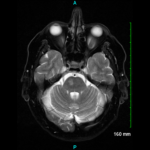Beware certain foods for patients with immune-mediate necrotizing myositis. It’s known that statins may induce myositis, but some foods—oyster, portabella mushrooms and red yeast rice—can as well.
“There are some foods that have statins in them,” Dr. West said. “It’s important to tell your people who do have statin-induced myositis, if you take them off statins, to stay [away from] those particular foods.”
ad goes here:advert-1
ADVERTISEMENT
SCROLL TO CONTINUE
Thomas R. Collins is a freelance writer living in South Florida.
Reference
- Stone JH, Tuckwell K, Dimonaco S, et al. Trial of tocilizumab in giant cell arteritis. N Engl J Med. 2017 Jul 27;377(4):317–328.


